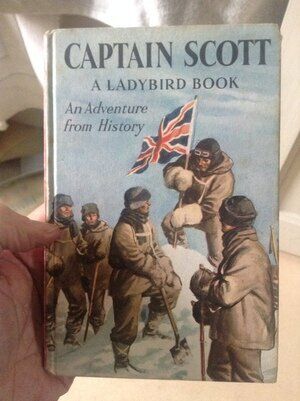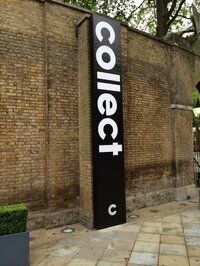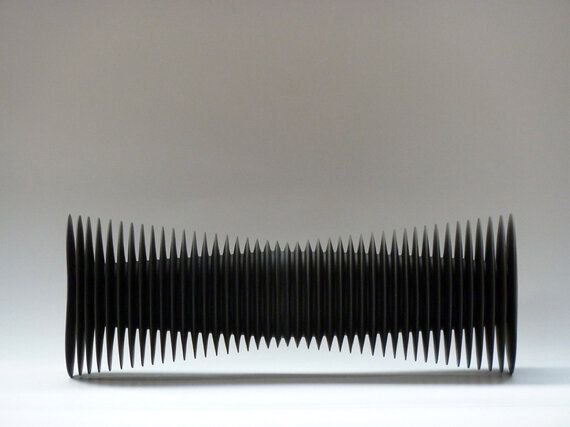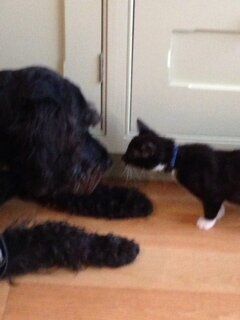Sorting through my books, I rediscovered a stash of Ladybird Books and spent a delicious couple of hours reveling in both an erstwhile collecting obsession and a flashback to my childhood. In the 60s, when I was learning to read, these little hardback books were my constant pleasure. They have a very consistent form, being 56 pages long, as a rule, for printing cost reasons. They were affordable at only 2 shillings and 6 pence, 12.5p in today's money. They were often factually useful, and I remember using information gleaned from them in my A levels - though my results were not exactly a good advertisement for Ladybird Books. Many of my copies bear historic food stains or are enhanced by random underlining. The backs of the books carried a list of the others in each series and quite a few have inscribed ticks beside them, in my fair hand, marking the titles I had read. The illustrations are bold and in a very distinctive restricted colour palette. I leafed through a couple of the Biographies, then my eye was caught by the Utilities... and from there I began browsing through them all. I amassed a good number in my childhood but in my early 20s I took up the collection again in earnest - for nostalgia, for the books' clear expression of their period, and for the simple joy of collecting these endearing, un-ironic volumes. As I sat at my desk reading and looking at pictures I was carried back to childhood afternoons spent in bed when I was asthmatic.


If I was ill, as a special treat, I was sometimes allowed to spend the day in my mother's bed. It was a mahogany four-poster and seemed very grand. The bedroom floor was linoleum in bold geometric shapes of brown and a contrasting grey/blue. The best bit about being ill was watching television all day. Unlike today, there was not a steady stream of programmes. But they did have the famous girl/clown/blackboard test card and every now and then a colour test programme. We were very excited about our colour tv: the newspaper listed which programmes would be transmitted in colour, and the family would gather round just because a programme was to be in colour! Strangely, when I watch vintage programmes, I am often surprised to see that they are in black and white. It turns out that perhaps the thing that made the most lasting impression on me was in fact the story, rather than the colour. My favourite test programme, and one I would watch regularly, was called 'The Home Made Car", which is about a man who rebuilds a vintage car and finds love. I think it sealed in me a love of romantic comedies at an early age. If I was ill for a week or more I would watch it 5 or 6 times. The joy of the internet: I found it on the BFI website where I was able to see it again for the princely sum of £1. It was wonderful, but I did begin to feel slightly wheezy.


Dragging myself back from childhood, I cycled off to attend the opening of the Crafts Council show, Collect. This annual celebration of craft and design, now housed in the Saatchi gallery on the Kings Road, is a real treat. There are only 35 odd dealers but there is a boisterous enthusiasm and a clear sense of seriousness. There was a strong Asian influence this year with both pieces made in the East and inspired by it. I was very struck at Ippodo, a gallery based in Tokyo and New York, by some exquisite lacquer boxes which were traditional in technique but totally modern in appearance. I fell for and bought a small pair of porcelain plates by Roger Law from Sladmore Contemporary; Law was one the partners behind the satirical television puppet show 'Spitting Image', and has now immersed himself in Chinese porcelain, producing bold, original and reconsidered versions of traditional vessels. There is a palpable echo of the exaggeration in comic satire through this work.

There was not a lot of free stuff at Collect and the wine was definitely not good for more than as a garnish to the hand. However, for the opening of a new exhibition at Mint - a contemporary design shop just near the Brompton Oratory - there was a magnificent spread. Huge baskets of thinly sliced salami, buckets of hummus, whole wheels of sundry cheeses, all to be swept up by mountains of freshly sliced baguette. The only downside was that I found the work on show slightly disappointing. Some pieces seemed more interested in being gimmicky than in taking themselves seriously as works of design, or even in being well-made. There was one notable exception - a potter called Nick Lees. He was showing incredibly patiently-produced vases which seem to refer to machinery rather than traditional ceramics. Geometric shapes with symmetrical bands of fins all the way along the body, they look almost like scientific instruments or electrical components. They are calm, disciplined and very beautiful. They stood out.
Walking up the road, I was struck by a poster for Fendi. They took over the Mallett building in Bond Street and they have just opened. Some years ago Mallett commissioned an artist to make a watercolour of the facade. It looked strikingly like the Fendi advertisement. Where Mallett's name was once inscribed now Fendi's proudly sits. I did feel a pang, but Mallett are now very happily ensconced in the magnificent Ely House in Dover Street, so there is no looking back.

From the poster we went to dine at the Michelin building. The forecourt, which I always imagine busy with cars and the smell of petrol, has a little corral of tables and for a late supper it is easy and charming. We ordered a crab salad and it swiftly came with a basket of cut bread. I tentatively asked if it was at all possible to have some toast. The waiter was only too happy to oblige and bustled off. Some time later he returned with small heap of crisp brown sourdough. The crab was lovely but somehow the toast took centre stage. I will remember that toast for quite some time partly because it was crunchy, a perfect brown, warm and flavoursome, but also because the waiter brought it with such pleasure and éclat.
At 9 am next day we gathered in the rain, sheltering under a portico at the Royal Hospital to finalise the Masterpiece exhibition of the work of Philip King. It is a complex puzzle as the Hospital have space commitments and the ground is vulnerable in various places. But in the drizzle we fashioned a plan. Every time we go it seems to rain, and Tom from the gallery Thomas Dane Associates, who is the image of patience and calm, looking cool in a blazer and jeans, invariably gets soaked. Andy Hickling from the Hospital towers benignly above us and manages to find proper steel toed boots for those that don't have them and solutions for problems that seem intractable. As we leave, the sun comes out and it seems auspicious. The Chelsea Flower Show people are in full swing building their event and we wander around amazed by the extravagant construction and the effort they all put in. We sometimes wonder at the amount of work we do for just a few days of exhibition but this is on a whole different level, and it is quite humbling.
